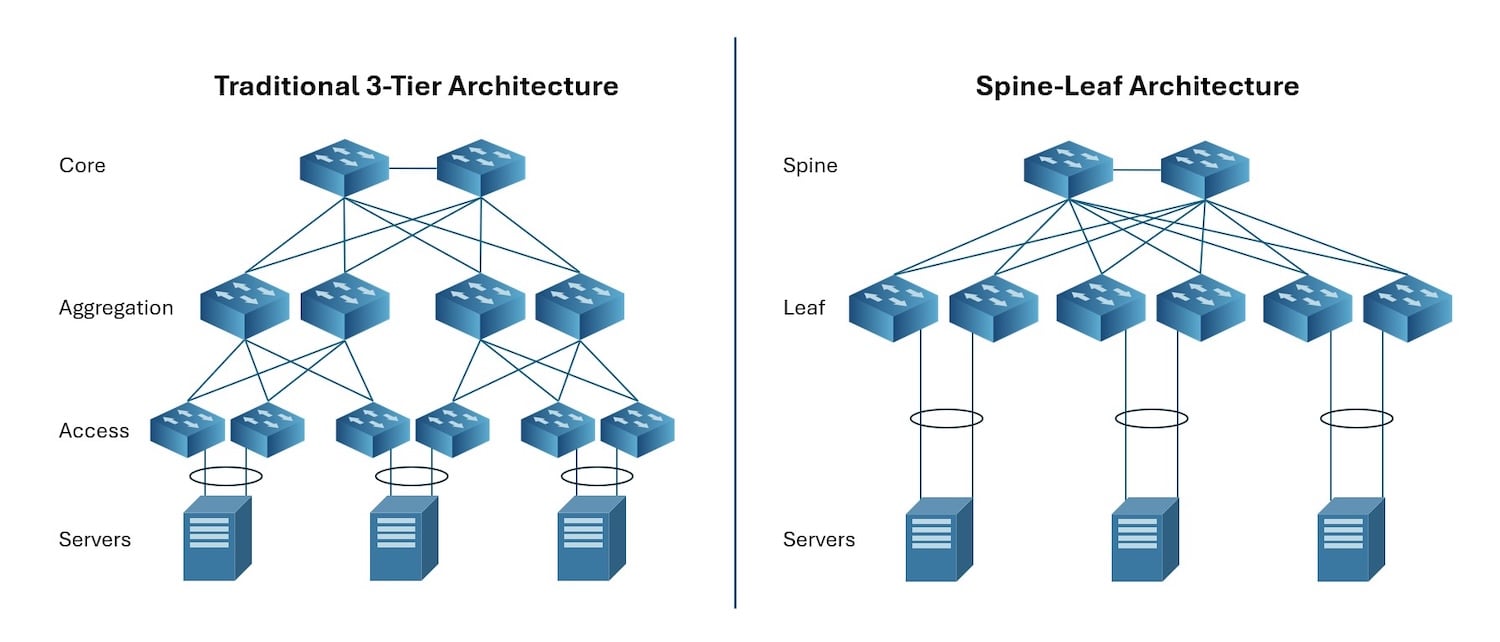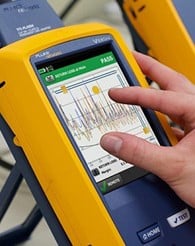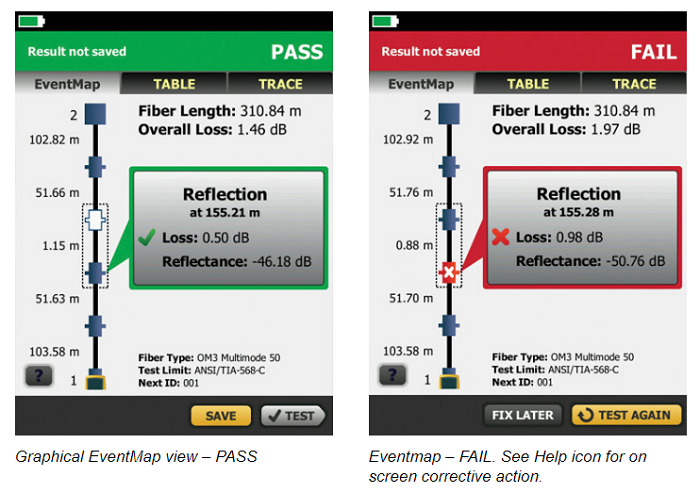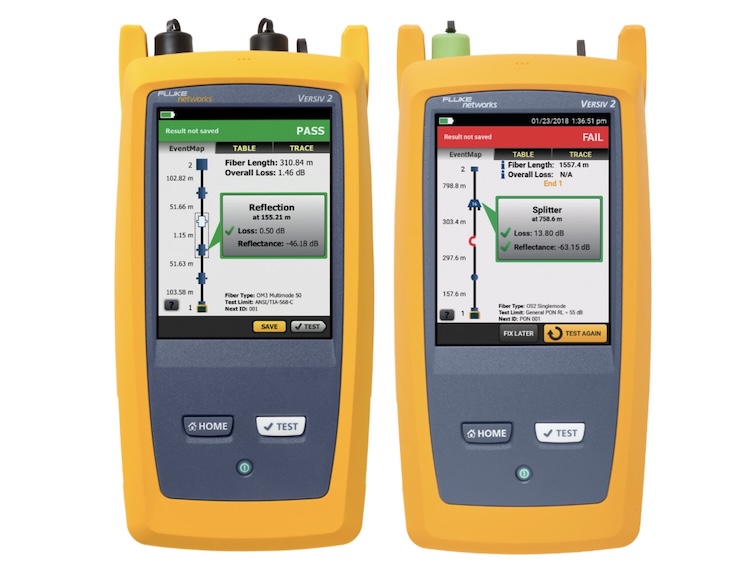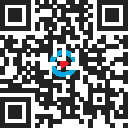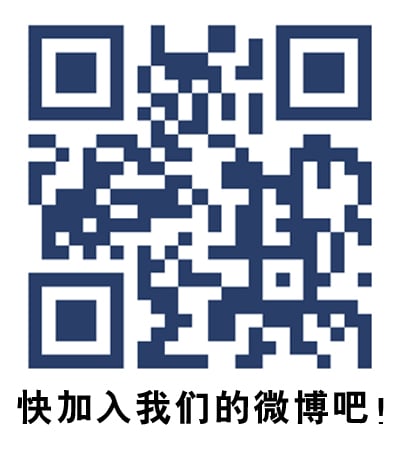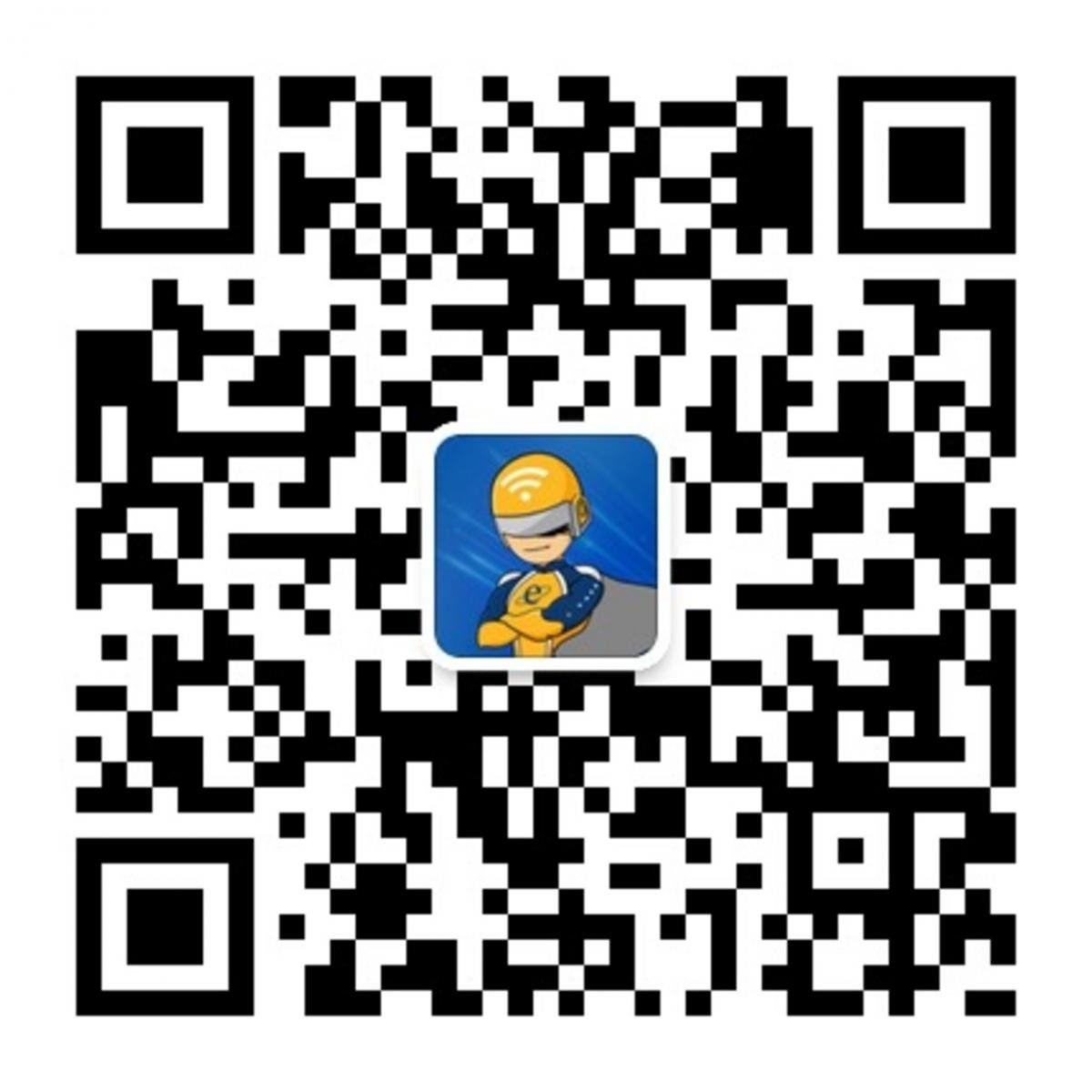WHITE PAPER
Choosing the Right OTDR for your Data Center
Download PDF
Overview
In modern data centers, fiber optic links are essential for efficiently and quickly transmitting vast amounts of data between switches and servers for processing, storage, and access to applications and services in support of a wide range of digital operations.
To maintain ongoing performance and reliability of critical fiber links in data centers, network professionals need robust tools to quickly troubleshoot problems and verify the integrity of their fiber cabling infrastructure. Choosing the right Optical Time Domain Reflectometer (OTDR) goes a long way in accurately and efficiently characterizing data center fiber links, preventing costly downtime and mitigating risks.
|
|
On This Page
- Today’s Data Centers Need More Than Basic Fiber Diagnostics
- What Is Driving Change in Fiber Technology?
- The Value of an OTDR: More Detailed Analysis
- Choosing the Right OTDR for a Data Center
- OptiFiber™ Pro: The Solution from Fluke Networks
- Data Center Integrity Relies on Problem Solving
- More Fiber Testing and Troubleshooting Tools for Data Centers
Today’s Data Centers Need More Than Basic Fiber Diagnostics
Data center infrastructure is undergoing significant transformation, driven by the demand for faster transmission speeds, increased bandwidth, and lower latency. This evolution is fueled by virtualization and cloud integration, as well as technologies like artificial intelligence (AI), virtual and augmented reality, and advanced data analytics. As a result, data centers are not only expanding capacity, they’re becoming increasingly complex at the physical layer as new switch architectures are adopted. At the same time, maintaining continuous operation and minimizing downtime are more critical than ever to meet service level agreements, ensure business continuity, and maintain customer satisfaction. These challenges are compounded by the emergence of cost-effective fiber applications that introduce additional measurement requirements to ensure functionality.
Maintaining high availability in these complex data center environments is virtually impossible with only basic fiber diagnostic tools like visual fault locators (VFLs), optical fault finders, and simple power meters. Modern data centers necessitate a more accurate, faster, and comprehensive methodology to pinpoint issues and verify the fiber infrastructure integrity. This underscores the need for an OTDR designed to easily characterize data center fiber links.
Choosing the right OTDR addresses the new generation of data center testing requirements, ensuring the performance and reliability of critical fiber links. This white paper provides a high-level overview of ongoing changes in data centers, the implications of those changes for fiber infrastructure, and the key parameters for selecting an OTDR that meets these evolving needs.
What Is Driving Change in Fiber Technology?
Cloud integration
Organizations are increasingly adopting cloud computing for access to compute power, storage, and advanced network capabilities. This trend makes fast, reliable fiber connections essential for enterprise data centers to quickly access cloud resources. At the same time, cloud data centers require an ever-expanding amount of fiber to scale their services and meet customer bandwidth demands.
High-performance computing
Applications like AI and machine learning analyze massive data sets across clusters comprised of high-performance GPU-based servers, which are interconnected through leaf switches via multiple high-speed 400 Gbps fiber links. Depending on the application and data processing requirements, high-performance computing clusters can contain hundreds or even thousands of GPU links.
Typically, high-performance computing clusters reside in dedicated backend networks within the data center, connecting to their own spine switches at 800 Gbps. These backend networks require additional fiber links to the existing frontend network that connects these systems to the outside world.
New switch architectures
Data centers are transitioning from traditional three-tier switch architectures, which rely on north-south data transmission, to more efficient spine-leaf architectures that better support virtualized environments. This shift reduces the number of switch tiers and enables east-west transmission between virtualized servers.
In a spine-leaf design, every leaf switch connects to every spine switch, forming a full mesh topology that results in more interconnection points and fiber links. In a spine-leaf architecture, server-to-server communication requires only two switch hops, which is a significant improvement over data potentially having to traverse three switch layers in traditional three-tier architecture.
|
|
High-density equipment
As data centers expand to accommodate more data and applications, network professionals are looking for ways to maximize capacity within existing facilities while reducing power consumption and enhancing operational efficiency.
One strategy for accommodating growth involves consolidation through faster, higher-density networking and storage equipment. Unlike traditional switches offering 24 or 48 ports, these newer switches are designed with hundreds of ports in the same physical footprint.
While this next-generation equipment saves valuable rack space, lowers power consumption, and reduces the number of switches for streamlined management, it also drives a significant uptick in fiber density, particularly at patch panels that facilitate interconnectivity between switches and servers.
Modular cabling systems
With its plug-and-play capability, modular or pre-terminated fiber cabling has become the norm in the data center because it’s simpler and less costly to install than field-terminated cable. These systems are also well suited for multi-fiber MPO or MMC connectivity supporting high-speed 200, 400, and 800 Gbps applications.
However, pre-terminated fiber is only guaranteed “good” as it existed in the manufacturer’s factory. It must then be transported, stored, and later bent and pulled during installation. All kinds of performance uncertainties are introduced before fiber cables are deployed. Proper testing of pre-terminated cables after installation is the only way to guarantee performance in a live application.
New fiber applications
Newer short-reach single-mode applications — such as 100GBASE-DR, 200GBASE-DR4, 400GBASE-DR4, and 800GBASE-DR4 — are gaining traction in large data centers due to their use of cost-effective, power-conserving lasers. These applications support link lengths up to 500 meters and offer significant savings compared to long-distance single-mode applications that require high-power lasers.
However, short-reach single-mode transceivers are more susceptible to reflectance, and insertion loss limits for these applications are based on the number and reflectance of connections. Measuring the reflectance of individual connections in a fiber link using an OTDR is becoming increasingly vital for supporting these new applications.
The Value of an OTDR: More Detailed Analysis
As data centers evolve and fiber optic links that connect servers, networking, and storage devices transmit data at increasingly higher speeds, thorough fiber testing has never been more important. Even the slightest signal loss or reflective events can adversely impact performance.
- An OTDR provides a more detailed analysis, identifying potential issues that Tier 1 testing might miss.
- Only an OTDR can measure the loss and reflectance of individual splices and connectors along a fiber link. This capability helps prevent future problems by identifying marginal components that might otherwise pass Tier 1 testing.
- An OTDR is the only way to accurately measure the reflectance of individual connections for testing emerging short-reach single-mode applications.
Beyond its analytical capabilities, an OTDR is also the ultimate troubleshooting tool since it can precisely pinpoint the location of loss and reflective events that degrade performance or cause a fiber link to malfunction. With an OTDR, data center professionals can quickly locate and address issues such as poor-quality or damaged connectors, contaminated fiber end faces, faulty fusion splices, macrobends, microbends, breaks, or other damage along the length of the fiber. Given a data center’s critical need to maintain availability and uptime, the OTDR’s ability to quickly and easily pinpoint fiber link issues is essential for rapid troubleshooting and resolution.
Choosing the Right OTDR for a Data Center
Selecting the proper OTDR can improve reliability and impact how quickly and efficiently you can test and troubleshoot fiber links in your data center, as well as how you document the quality of the work. Alongside basic OTDR testing capabilities, here are some recommended criteria to consider when choosing an OTDR for your data center.
1. A simplified and task-focused user interface: Populating a data center with thousands of fibers is an enormously time-consuming job. Maintaining fiber health is just as challenging, and that makes fast testing and troubleshooting critical.
The majority of OTDRs on the market today are designed to cover carrier applications. As a result, many have very complicated interfaces that require the user to contend with numerous buttons and controls and navigate cumbersome multi-level menus.
Data centers are already grappling with shortages of skilled staff and higher availability requirements. Look for an OTDR with fast setup and an intuitive, simple-to-use interface to shorten the technician’s learning curve, reduce testing time, and ultimately save money.
|
|
OTDRs like the OptiFiber™ Pro that offer the ability to pinch-and-zoom for easy magnification of a fiber trace allow for fast, in-depth trace analysis.
2. Precision fiber channel information: With the increasing use of short patch fibers and multi-fiber MPO connectors, details on every link — loss, connector, and reflectance — are critical to ensuring performance. OTDRs with an attenuation dead zone of more than 3m are no longer applicable for testing data center fiber.
Look for an OTDR with an ultrashort dead zone for finding issues that jeopardize the link loss budget or cause serious signal degradation. A manual settings option is also ideal for testing unique scenarios and uncovering details of interest. In addition, the ability to pinch-and-zoom for easy magnification of a fiber trace allows for fast, in-depth trace analysis. Resolving problems fast requires that faults and events be presented in a simple, graphical map so users of all skill levels can efficiently perform fiber troubleshooting and accelerate network recovery.
|
|
OTDRs like the OptiFiber™ Pro that display all fiber events graphically make it easy for users at all skill levels to troubleshoot fiber.
3. Simplified bidirectional testing: When using an OTDR, measuring in both directions is essential. A mismatched splice might appear as a gainer (negative loss) in one direction and show too much loss (false loss) in the other direction.
Bidirectional testing, which is required for Tier 2 testing, averages the loss from both directions to determine the actual loss of the connection. Look for an OTDR that simplifies bidirectional testing and automatically averages measurements from both directions, eliminating the need for additional software or manual calculations to determine the actual loss of a connection.
4. Effective planning and documentation: As data centers grow and change, coordinating projects and ensuring quality installation on all fiber is challenging. There are several software applications available for project management, but until recently, none have been integrated with an OTDR. Look for an OTDR with integrated project management capabilities that provide cable-by-cable granularity to save time and planning effort. You should be able to use a single tool to control, monitor, consolidate, and document all test results.
OptiFiber™ Pro: The Solution from Fluke Networks
The OptiFiber Pro OTDR from Fluke Networks is a dedicated fiber tester engineered to address the need for testing and troubleshooting fiber links in modern data centers. Leveraging advanced optical innovation and inputs from both seasoned fiber testers and highly experienced user interface experts, the OptiFiber Pro provides a set of unique capabilities that begin paying off immediately. It increases work efficiency, reduces operational costs, and provides an unprecedented level of precision and detail about your data center fiber infrastructure.
|
|
OTDRs like the OptiFiber Pro that display all fiber events graphically make it easy for users at all skill levels to troubleshoot fiber.
- A smartphone user interface that minimizes the learning curve and costs associated with interpreting test results while greatly reducing the complexity of using an OTDR.
- Simplified “Data Center” mode automates the process of setting test parameters such as wavelength and end-detection algorithms, significantly reducing set-up time and the complexity of learning how to troubleshoot in data centers.
- Ultrashort event and attenuation dead zone detect short connectors and patch cords typically used in data centers, particularly in modern virtualized data center environments.
- Innovative EventMap™ view shows all fiber events graphically and allows any user to effectively characterize and troubleshoot any fiber infrastructure. The event map can also be a valuable training tool to help technicians improve their OTDR trace interpretation skills by verifying what they are seeing.
- SmartLoop™ technology enables fast and easy bidirectional testing of two fibers in both directions and averages the measurements as required by industry standards — without needing to take the OTDR to the far end.
- Powerful built-in project management tools facilitate the assignment and tracking of all fiber testing jobs for multiple users, enhancing project tracking visibility and allowing cost-effective device sharing.
- Uses LinkWare™ management software to ease the burden of managing workflow, documenting test results, and keeping the OTDR up to date with the latest software.
- Integrates with the LinkWare™ Live cloud-based platform to manage jobs and testers from any smart device.
- Based on the modular Versiv™ platform that supports Tier 1 fiber certification, fiber inspection, and copper certification to Category 8.
Data Center Integrity Relies on Problem Solving
Data centers are advancing at a tremendous pace to handle more data and support increasing virtualization, cloud integration, and emerging high-performance computing technologies. The integrity of modern data center infrastructure relies upon the ongoing performance of the fiber links that connect switches, servers, and storage devices — and the ability of technicians to find and correct issues fast.
The Fluke Networks OptiFiber Pro OTDR is a superior solution for testing and troubleshooting data center fiber networks. Built on years of experience and leadership in developing network testing and measurement devices, OptiFiber Pro saves precious time for data center operators, installers, and technicians, helping them perform accurate, high-quality Tier 2 testing to analyze mission-critical fiber links and quickly troubleshoot and resolve issues to maintain uptime.
Learn more about the OptiFiber Pro OTDR, try an online demo, reach out to an expert, and more here.
More Fiber Testing and Troubleshooting Tools for Data Centers

CertiFiber™ Pro Optical Loss Test Set
Accelerates every step of the fiber certification process with the fastest time to certify — two fibers at both wavelengths in under 3 seconds. Built on the future-ready Versiv™ platform. Provides merged Tier 1 (Basic) / Tier 2 (Extended) testing and reporting when paired with OptiFiber Pro.

One-second automated PASS/FAIL certification of fiber end faces takes the guesswork out of fiber inspection in certifying fiber optic cleanliness to IEC 61300-3-35 industry standards.

Supports single-mode and multimode MPO fiber certification with automatic scanning and testing of all fibers. Eliminates the complexity of polarity issues and makes cassettes easier to test in the field.
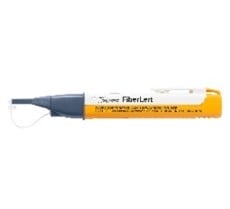
FiberLert™ Live Fiber Detector
A fast, accurate, and safe non-contact solution for detecting active single-mode and multimode optical signals in live data center networks. Small enough to fit in your pocket, easy to use in high-density patching areas.

VisiFault™ Visual Fault Locator-Cable Continuity Tester
Ideal for locating visual faults such as tight bends, breaks, and bad connectors, and for verifying continuity and polarity for accelerated end-to-end fiber checks.
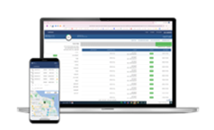
LinkWare™ Live Results Management Service
A cloud-based service that lets Versiv users manage cabling certification jobs anytime, anywhere, with anyone, on any device.
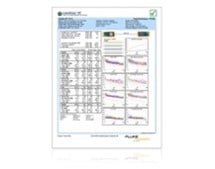
LinkWare PC Cable Test Management Software
Manage all test results from multiple testers using one PC application that saves time and delivers professional reports in a common format.


